Press the right key for the next slide (or swipe left)
also ...
Press the left key to go backwards (or swipe right)
Press n to toggle whether notes are shown (no equivalent if you don't have a keyboard)
Press m or double tap to see a menu of slides
Perception of Causation
Can humans perceive causal interactions?
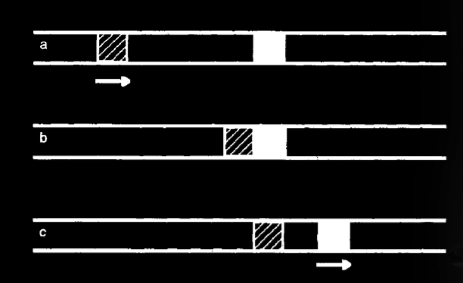
Thines et al (1991)
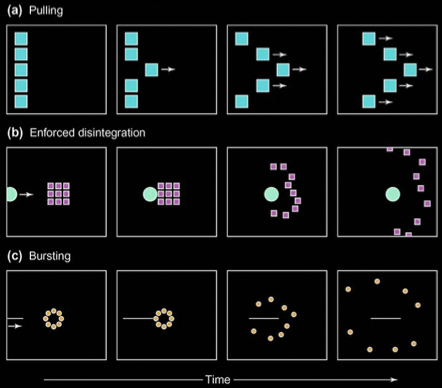
Scholl & Tremoulet 2001, figure 2
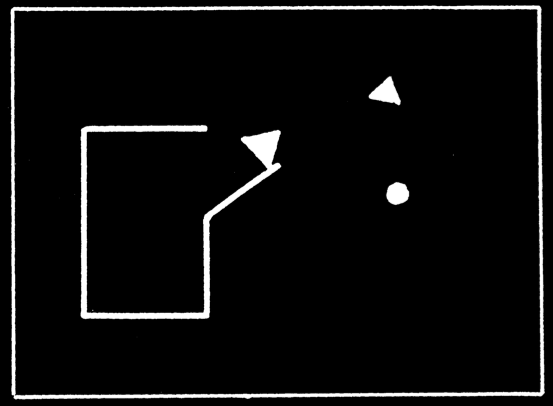
Heider & Simmel 1946, figure 1
How to get beyond intuition?
Michotte: the experience of launching depends on interactions among various factors including
- the relative speeds of the two objects
- the delay between the first and second objects’ movements
- the spatial gap between the two objects
- the trajectories of the two objects.
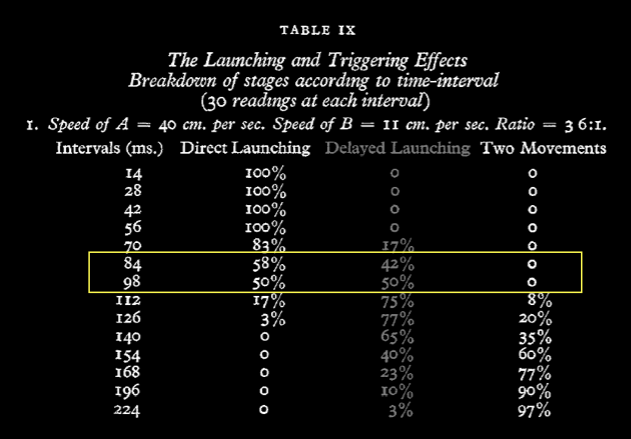
Michotte 1946 [1963], p. 115 table IX (part)
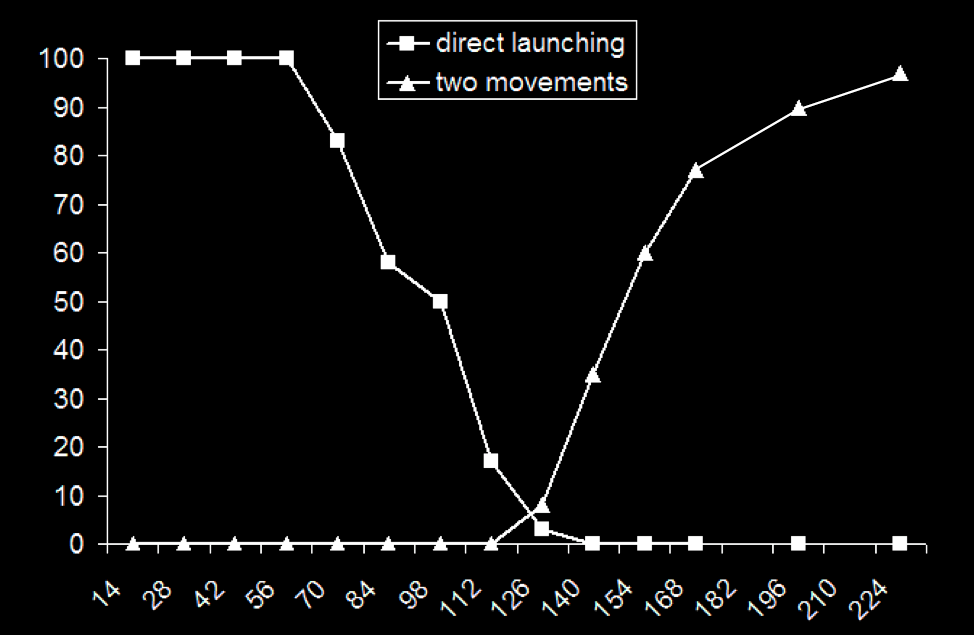
Michotte 1946 [1963], p. 115 table IX (part)
detecting launching effects at 6 months
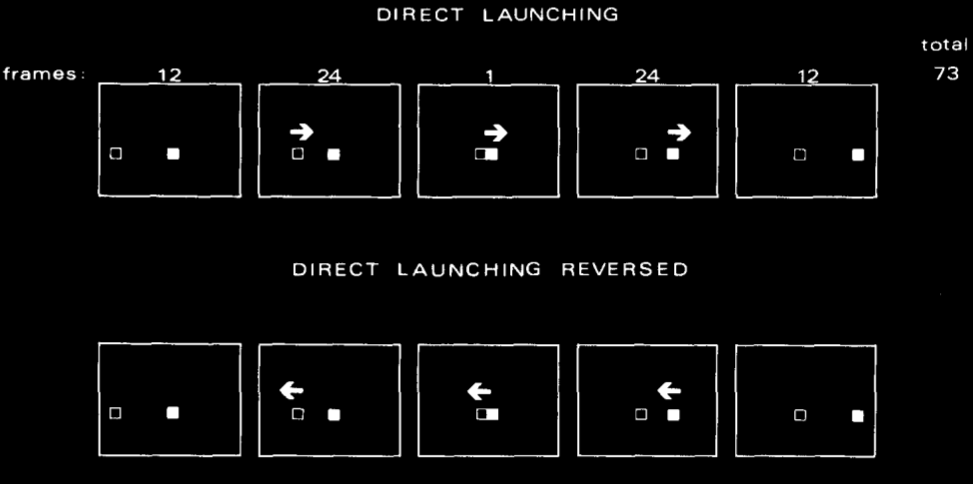
Leslie & Keeble 1987, figure 4
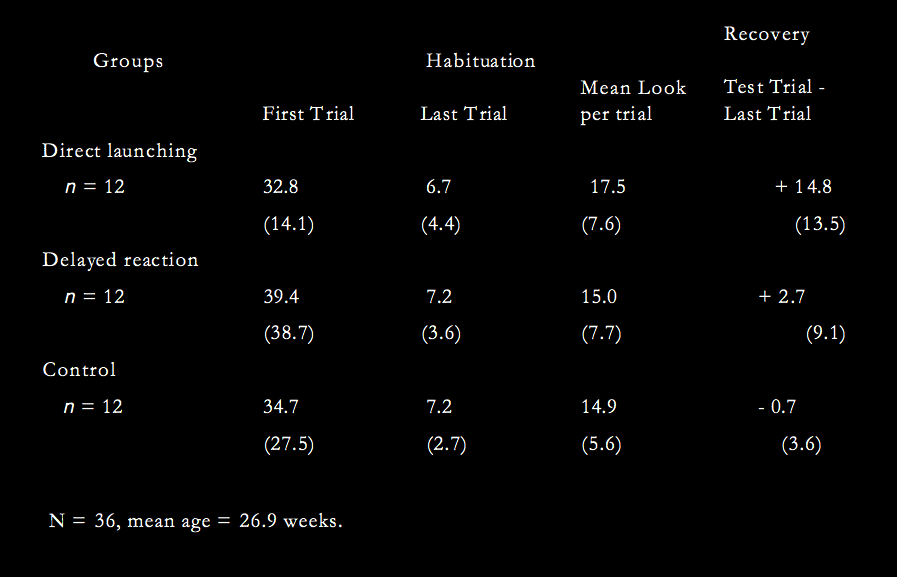
Leslie & Keeble 1987, table 4
How to get beyond intuition?
The launching effect: detecting a 50ms difference in the delay between two movements.
- How is launching detected? For example, does it involve perceptual processes?
- Why is a delay of up to around 70ms consistent with the launching effect occuring?
Guess how the launching effect works!
judgement-independent

Thines et al (1991)
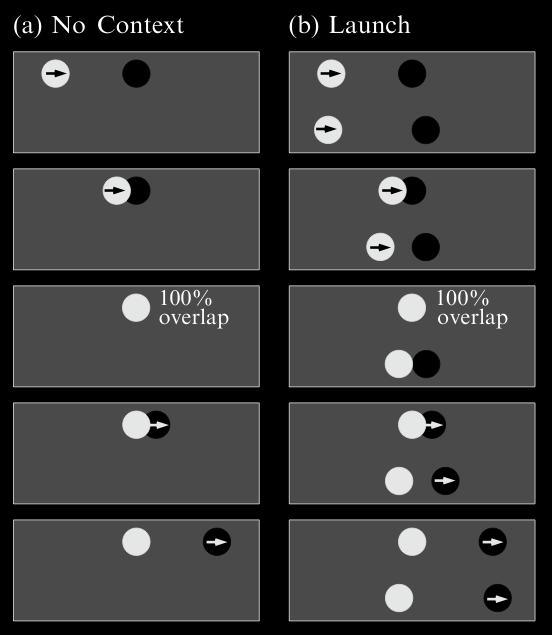
Scholl and Nakayama 2004, figure 2 (part)
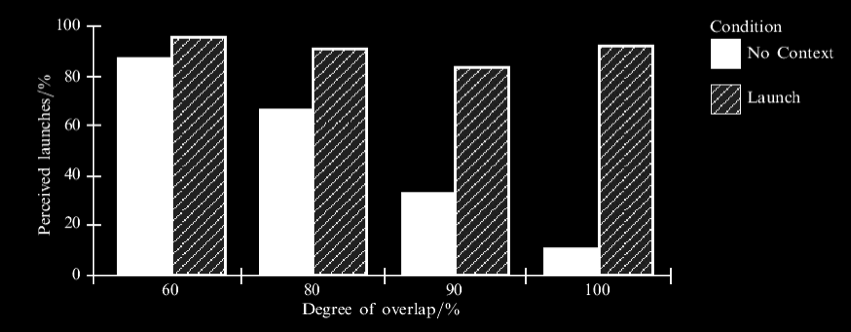
Scholl and Nakayama 2004, figure 5
- How is launching detected? For example, does it involve perceptual processes?
- Why is a delay of up to around 70ms consistent with the launching effect occuring?[This question is blurred]
Summary so far
- Adults report experiencing a launching effect.
- These reports show that they can make minute distinctions.They can detect tiny, 50 millisecond differences in the delay between two movements.
- Infants detect apparent causal interactions from 6 months of age or earlier.
- Detecting apparent causal interactions is bound up with perceiving objects.It's not that we first perceive objects and surfaces, and then identify causal interactions. Rather, identifying causal interactions is part of perceiving surfaces and objects. So the launching effect does seem to involve perceptual processes.